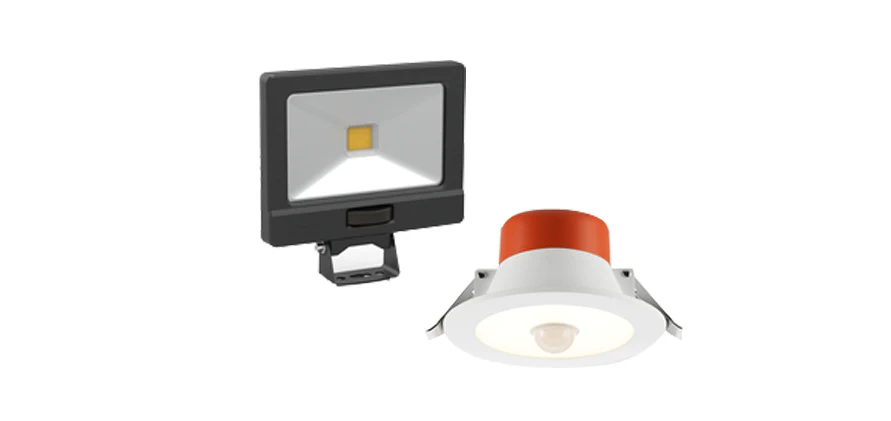Introduction to Sensor Lighting
What is a PIR Sensor?

PIR sensors are a type of motion detecting sensors which are used both indoors and outdoors to trigger the function of automatic doors, security lighting, and security alarms. When it comes to home lighting, PIR sensors save energy and cut down costs on electricity by only turning on lights when motion is detected.
They also optimise safety in the home, as they can be installed in staircase and bathroom areas so that you are able to navigate obstacles easily without having to physically turn on the light switch. This is also ideal in commercial areas and common public places to prevent the spread of bacteria from multiple people using a light switch.
PIR sensors provide extra security at the front of the home, especially when built-in or wired up to floodlights. This safety feature has the ability to deter trespassers and provide peace of mind to homeowners
How Does the PIR Sensor Work?

Passive infrared sensors detect light and heat emitted from objects and people in its field of view. These sensors have the ability to remember the normal thermal level of the area by using an infrared camera. Then, they pick up on any changes to this normal level and detect animals or people as they pass by, while avoiding the detection of non-living moving objects which do not produce heat. For example, outdoor PIR sensor lights would not be triggered by objects such as falling leaves, making the PIR technology more efficient than other types of motion sensors.
PIR sensors only detect motion in their individual “field of view”. These fields are able to cover a wide area by condensing light and splitting the lens into multiple sections. The split lenses are then able to combine bits and pieces to form a whole image of the surrounding area.

Some PIR lighting products come with a remote control for additional customisability. This means that you can adjust the sensitivity of the PIR sensor and the range of motion detection. This will reduce or expand the field of view of the sensor. For example, when installing security lighting on the side of the house, you may choose to reduce the range of motion detection so that it does not detect motion in the neighbours’ property.
The remote control also provides the ability to override the sensor, so that the light can function as a normal and static fitting when extra security is not required. This may be applicable in situations such as an outdoor dinner, where you would not desire the light to turn on and off, but rather stay on as a normal light fitting would.
By using the remote to set a delay, you can adjust the timing of the sensor’s response. For example, turning up the delay will cause the light to stay on for longer, which may be useful for navigating the driveway at night.
Product Types

PIR sensors can either be bought separately, or they may be built into various lighting fixtures such as floodlights, wall brackets, or downlights.
Floodlights

Many outdoor floodlights come with an in-built PIR motion sensor to optimise its security and safety function. Not only does it make the driveway safer for navigating at night, it also alerts residents of unusual outdoor activity and provides a clearer view of what is going on at the front of the house - this increases home security and provides an overall feeling of greater comfort and safety in the home.
Downlights

Downlights with in-built PIR sensors are a great solution for indoor residential lighting. They provide greater safety by automatically switching on when movement of body heat is detected, forgoing the need for you to manually turn on the light switch. This makes navigating spaces at night much easier and safer. As a bonus, PIR sensors are an energy efficient solution which will help to reduce electrical costs as they only operate when necessary.
To get started with PIR sensor lighting, check out our Kakadu floodlightsand our PIR Sensor Daintree Downlight!




